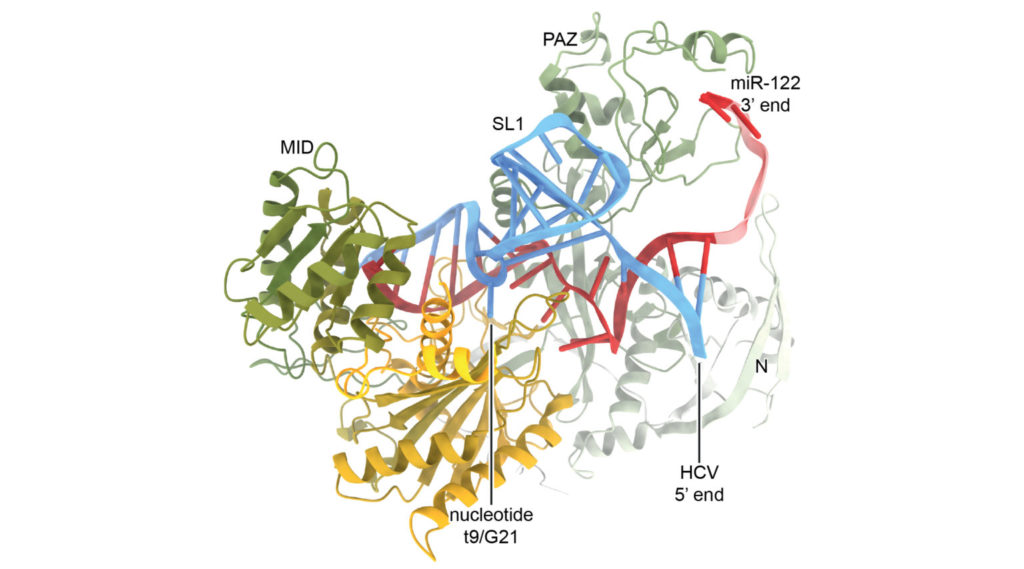Viruses have evolved a wide variety of ways to exploit parts of their host cells to avoid detection and to grow. The hepatitis C virus (HCV), which affects roughly 2-4 million Americans, is known to reprogram a host cell’s microRNAs, the short RNA strands that silence gene expression.
Researchers at the Scripps Research Institute recently performed X-ray crystallography of HCV at the Berkeley Center for Structural Biology at the Advanced Light Source. They determined the 3-D structure of the end piece of viral RNA (HCV Site-1 RNA) bound to host microRNA complexed with Ago2, a closely associated protein that also plays a central role in RNA silencing. This work, along with biochemical and cell-based assays, helped the team elucidate the molecular binding mechanism — the viral RNA forms a shape that increases its protection against the host cell’s antiviral response.
So far, the molecular properties and response observed in HCV appear to be unique, although superficially similar shapes have been observed in other related viruses, including Zika.

Read more from the ALS.



